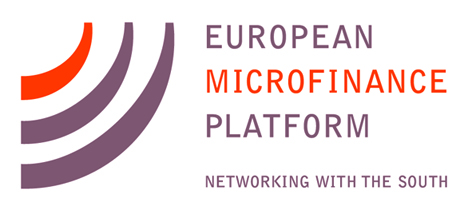Ciprian  Panturu of Belgium-based cooperative PHB Development opened a European Microfinance Week session on financial services providers (FSPs) moving toward digital services with a joke: “Who got the FSP to ‘go digital,’ the CEO, the CFO?” The answer, of course, is “COVID!”. Unlike before the pandemic, when FSPs were looking into digital services and clients were often unconvinced, Mr Panturu said, “Now there is a clear pull from the customer side.”
Panturu of Belgium-based cooperative PHB Development opened a European Microfinance Week session on financial services providers (FSPs) moving toward digital services with a joke: “Who got the FSP to ‘go digital,’ the CEO, the CFO?” The answer, of course, is “COVID!”. Unlike before the pandemic, when FSPs were looking into digital services and clients were often unconvinced, Mr Panturu said, “Now there is a clear pull from the customer side.”
Jessica Schicks of the Belgian Investment Company for Developing Countries (BIO) agreed, “Client uptake has been a challenge in past. COVID is helping overcome digital literacy and trust issues.” However, she warned, adopting digital products “needs upfront expense and patience to see positive financial effect” on the FSP. Mr Panturu agreed that new services are expensive, but he argued there are relatively quick wins to be had. He said that digitizing the loan process gives clear, quick benefits by reducing cost and increasing loan performance via credit scoring.
Ms Schicks warned that the ideas of rural outreach, savings mobilization and earning revenue from transaction fees as motivations for institutions to digitize “all are a little bit dangerous as assumptions.” The reasons that some digital services are not taking off in rural areas include that connectivity is poor, people lack privacy when they share phones, lack of electricity and lack of familiarity with using phones – especially among women. Instead, she said the incentive to digitize is more about client acquisition and retention.
Ed Higenbottam of Mauritius-based corporate finance firm Verdant Capital noted the benefits of deploying digital services in urban areas, for example in reducing transaction costs. While digital infrastructure may have weaknesses, so does traditional infrastructure, which often results in people traveling and waiting in line for hours to complete cash payments. On the topic of digital services taking over for traditional services, Mr Higenbottam offered the example of developed countries turning off analog broadcast television after running analog and digital broadcasts in parallel for several years. “There comes a time when you turn off the analog channel. You close branches. It’s a tough decision, but there comes a time.”
Regarding the level of strategic thinking that goes into transformations to digital, Ms Schicks said, “This is a front in which we have been disappointed.” Her firm is seeing FSPs try piecemeal solutions in hopes of quick wins, but it is not working well. Mr Panturu argued that a good compromise can be to partner with a fintech or mobile network operator that has already developed some of the needed experience and expertise. For perspective on where the industry might be in several years, he said, “Ten to fifteen years ago, [the use of] an MIS in an MFI was a stretch” sometimes, but it is now expected.
Ms Schicks and Mr Higenbottam both argued that technical assistance funds are sometimes too restrictive to help FSPs benefit from digital services. Indeed, BIO recently expanded its rules to allow technical assistance funds to be used for hardware and software rather than only consultants.
Mr Panturu noted that, “Digital transformation takes time. When I hear ‘plug and play,’ I get chills.” He recommends a phase-in plan that lasts two years because even a great product will fail without other elements being in place, such as policy updates and staff training.
Mr Higenbottam said his firm is encouraging consolidation within countries and across borders to allow for innovation to be shared. He sees the pandemic as speeding up this needed consolidation. “It’s probably a good thing for some of the weaker players to leave the market,” he said. Ms Schicks agreed mergers are coming: “As a sector, I hope we are going to manage consolidation” well.
This feature is part of a sponsored series on European Microfinance Week 2020, which took place online from November 18 through November 20. The event is held annually by e-MFP. MicroCapital has been engaged to promote and report on the conference each year since 2012.
Sources and Additional Resources
European Microfinance Platform (e-MFP) information on European Microfinance Week 2020
http://www.e-mfp.eu/european-microfinance-week-2020
MicroCapital coverage of European Microfinance Week, including the European Microfinance Award
https://www.microcapital.org/category/european-microfinance-week/
Similar Posts:
- SPECIAL REPORT: How to Achieve Responsible Digital Financial Services: European Microfinance Week Opens
- SPECIAL REPORT: e-MFP Green Inclusive and Climate Smart Finance Action Group Focuses on Capacity Building
- SPECIAL REPORT: Financial Inclusion for Women Requires Engaging All Levels of the Microfinance Institution
- SPECIAL REPORT: Green Action Group Celebrates 10th Anniversary at European Microfinance Week #EMW2023
- SPECIAL REPORT: Sounding Alarm Bells on Financial Health: Inclusion Is Not Sufficient
